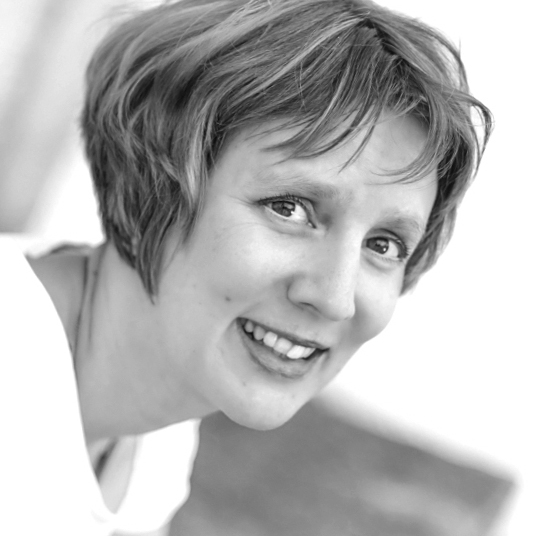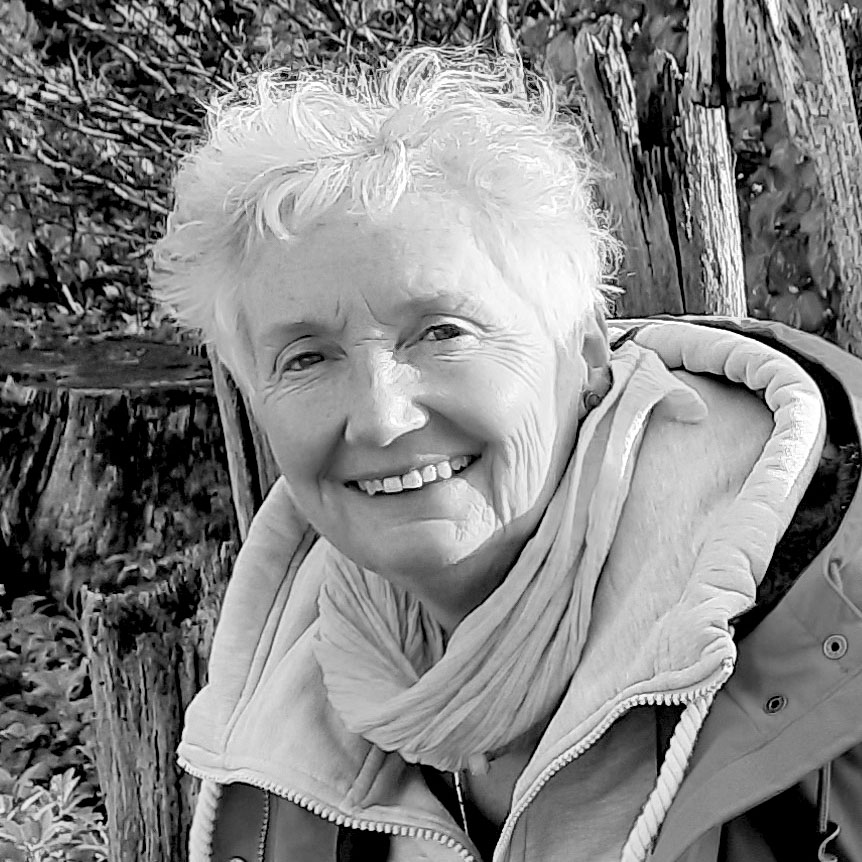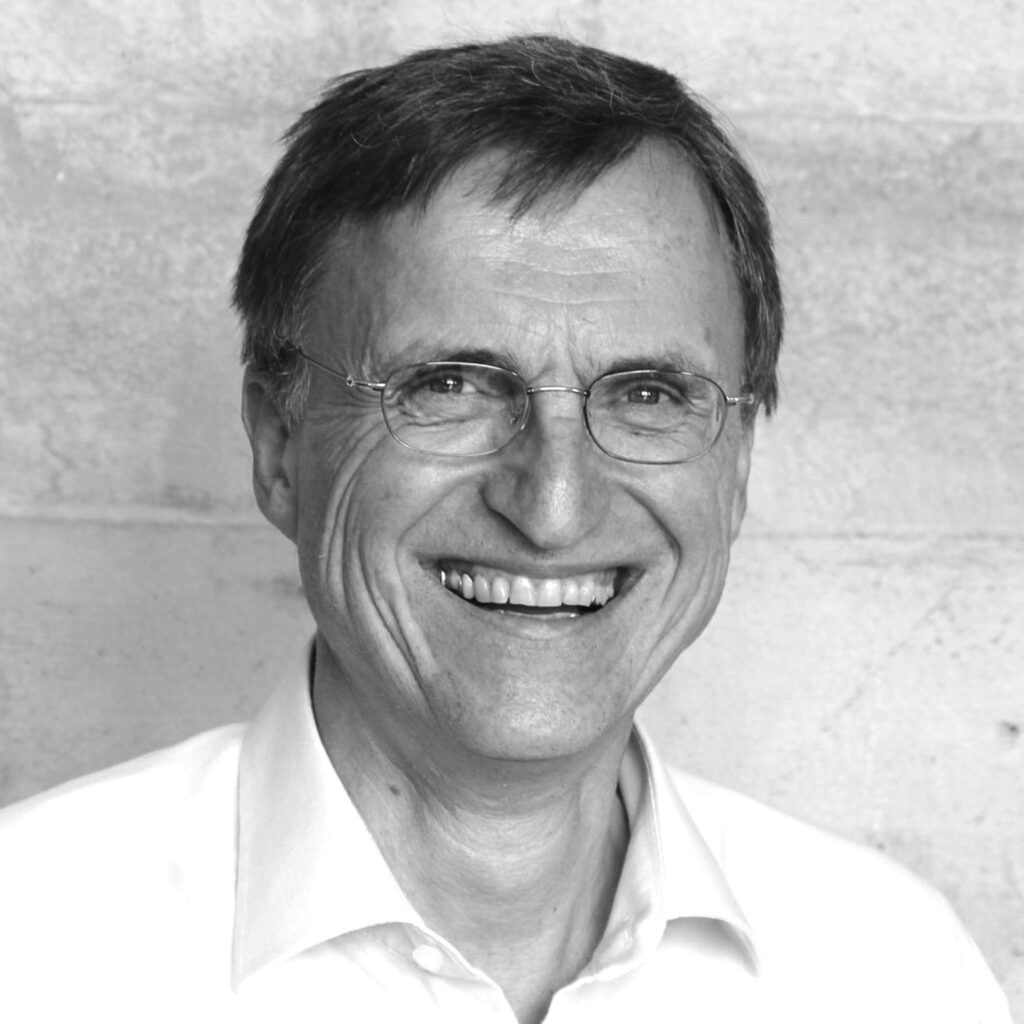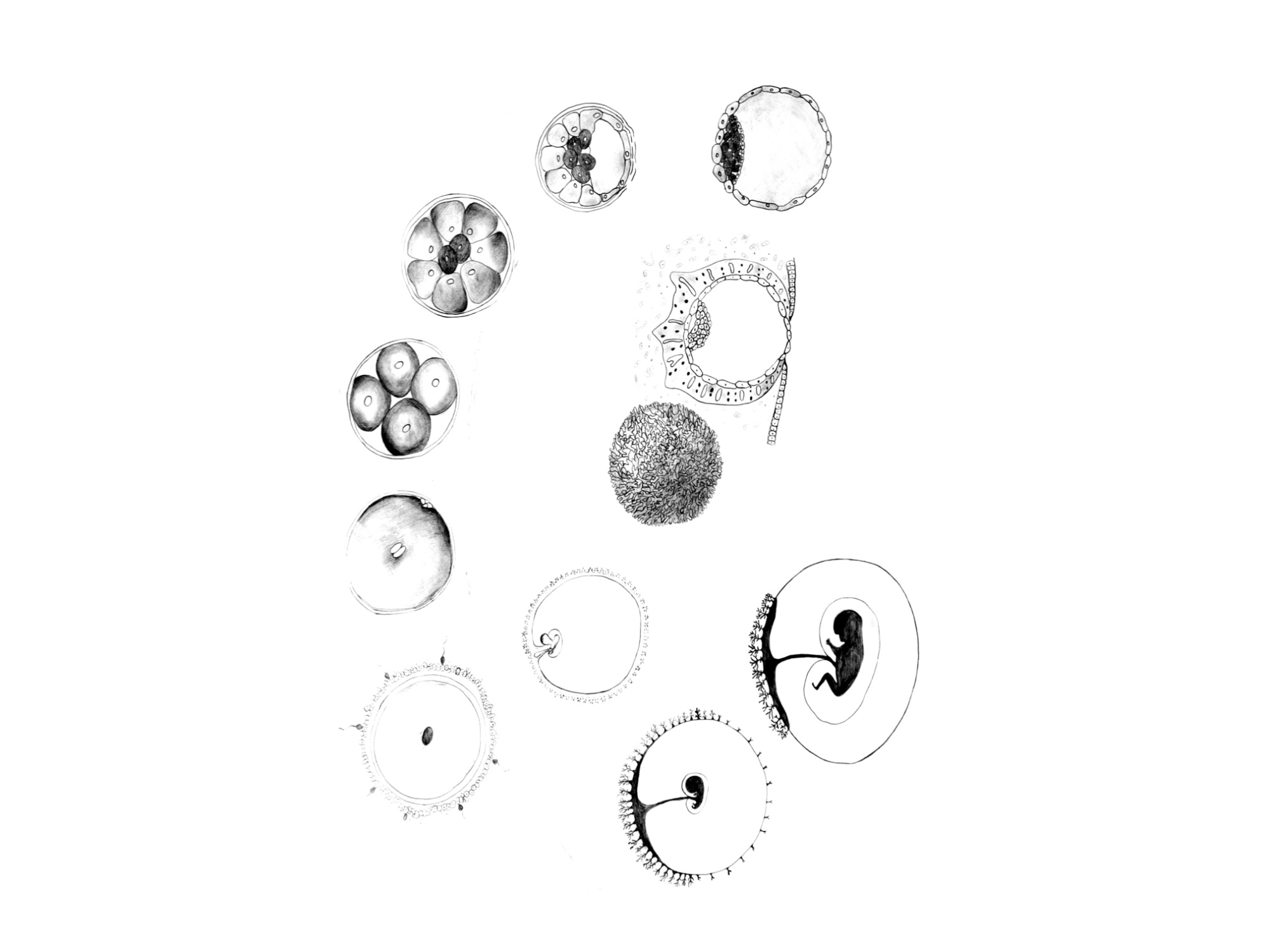The immune system develops through relationships. Growing up, from conception to puberty, we need a strong social “womb“ for lifelong health. A look at this development is elaborated here by three perspectives offered at the recent Medical Conference in Dornach.

Natalie Hurst: Three Sheaths Bring Us to Birth
The human being is prepared in the uterus for life on earth stage by stage, each stage with a new impulse for development. Once an impulse has been given, it continues to have an effect, even after a new one is introduced. Each stage is not supplanted by a new one, but works in conjunction with all previous and subsequent impulses, until the human being is prepared for life on earth. The story of Genesis in the Bible describes the creation of the world in the same way.
An egg cell has been in the mother’s body for a long time before it fully matures during a woman’s cycle. The egg is the largest cell in the human body, full of cytoplasm. It rests within itself. It is living Earth, awaiting the arrival of the sperm. The sperm, by contrast, is just two months old—its cytoplasm is reduced to a minimum, and its head is nearly all nucleus. It is outwardly active and purposeful. It is Light.
Two differentiated, polar opposite cells now meet and form the pre-fertilization complex. The inside is almost all cytoplasm from the egg cell, and the outside is almost all nuclei from the large number of sperm cells. This is exactly the opposite of a somatic [body] cell. Then, the absolute differentiation of the two germ cells continues its progression, and the inside becomes the outside, reaching a higher energy level. This state enables a new soul to incarnate.
Conception is a process of light, and from the beginning, the little human being is in a sheath: at first, the sheath of the egg cell, from which it emerges on the fifth or sixth day of life, to then be immediately enveloped by the mother’s endometrium [the inner lining of the uterus]. The germ cell initially uses its forces to develop the embryonic organ sheath made up of an amnion, placenta, and umbilical cord.
We need a sea-like sheath of amniotic fluid to provide for vitality and growth. Rudolf Steiner called the amnion the physical correlate of the etheric body. Amnion: light outside, light inside; warmth without, warmth within. Life may now begin!
The umbilical cord connects the germ cell with the mother. It is the archetype of connection and the ability to relate. Even in the uterus, the human being is already a relational being. Steiner described the preliminary stage of the umbilical cord, the allantois, as the physical correlate of the astral body. Umbilical cord: pulse outside, pulse inside; flowing without, flowing within. Feeling is now resounding!
The placenta is an important organ sheath for heat regulation, gas exchange, excretion, and food intake. The placenta is also a gate: not everything is allowed into the interchange between mother and child. With the presence of a boundary, we see that an individuality is maturing here, a new “I”. Steiner described the chorion [the fetal portion of the placenta] as the physical correlate of the I-organization. Placenta: forces from outside, forces from inside; will without, will within. I determine it!
The forces of the organ sheaths bring us to birth.

Daniela Zahl: When Everyone Goes Quiet
The first impulse for birth comes when, from out of the spiritual world, the human being sends down the spiritual germ of their body. After the spirit has sent the physical body down to the Earth, the human being draws together etheric substance from the world ether and forms their etheric body. In the third week after conception, they unite with this etheric body. The German words Empfängnis [conception] and empfangen [receive, welcome] illustrate this process. To receive or welcome something (empfangen), it must already be there; so, when we speak of conception (Empfängnis), we are reminded that there is something, or someone, already there! The I of the mother withdraws a little to give the child space, like a guest who is welcomed into a room. Her own sheath becomes more permeable as she ensheathes, or “swathes”, the child in her womb. Her belly grows, yet the child remains concealed. It is visible only to the inner eye of the parents. That is why one of our tasks as midwives, doctors, and therapists is to support the mother in her certainty to trust this inner picture. We are obliged to give the pregnant woman a sheath of her own. In addition to the three sheaths described by Natalie Hurst, there are three further sheaths: skin, uterus, and mother. Further sheaths follow from the father or partner and the family circle. When couples have the courage to embark on such an adventurous journey as childbirth and child-rearing, we all have the task of ensheathing them. This includes being aware of our language. There is no such thing as too big, too small, or a “normal” child.
The impulse to give birth remains a miracle, because we still don’t know why the child chooses a particular day to be born. Statistically, only four percent of people are born on their due date. Sometimes, the only ones who discover when a child will be born are their siblings. I had a patient who was having her second child. When she explained the duration of her pregnancy to her daughter, she hung a string in the kitchen marked off in centimeters to denote 280 days plus two weeks for a past-due date. Her daughter cut off a centimeter every day. The calculated delivery date passed. One morning, the little girl said, “I’m cutting it all off today.” The baby came that night.
During labor, there is a grandiose encounter between the essential elements of mother and child. As the mother’s ego and astral body sink in again, the child’s ego and astral body come closer to the mother and the mother senses this. What I have experienced and observed is the moment for the woman giving birth when she knows that she is completely alone with this being that is coming towards her. It doesn’t matter if your favorite partner is there. It doesn’t matter if the best midwife is there. She senses this incredible greatness. Then the rest of the labor doesn’t take long and the woman giving birth is in harmony with the last act of strength before the baby is born.
During labor, there is a grandiose encounter between the members of the mother’s being and the members of the child’s. While the mother’s “I” and astral body sink in again, at the same time, the child’s “I” and astral body come closer to the mother, and the mother senses this. I have experienced and observed this moment, when a woman is giving birth, and she knows that she is completely alone with this being that is approaching her. It’s all the same whether or not the most loving partner or the best midwife is also there. The mother feels this incredible greatness. Then, the rest of the labor doesn’t take long, and the woman giving birth is in harmony with their last act of strength before the child is born.
What begins in rhythmic labor contractions is a farewell process and works its way toward the final farewell. At birth, the child bids farewell to their mother’s sheaths. With their first breath, they make their first connection with the outside world. They take up the outside world into themselves and give something back to the world. And this process continues until the final breath. The next parting for the child is the separation from the placenta and other membranes. The child loses their prenatal sheaths. But, the forces of these sheaths continue to work and connect with the not yet embodied parts, which only incarnate through the process of growth. At the same time, the parents welcome the child. When the child lies on the mother’s breast, I think it is very rare for a woman not to close their arms around the child and, thereby, provide a sheath again.
Perhaps we are lucky enough to have our partner ensheathe them, too. As accompanying birth attendants, we must remain silent. The first word belongs to the parents, no matter how joyful we are about this moment. The first word must be left to the parents, because a new family has been born, and all the respect and dignity of this situation belongs to the words of the parents welcoming their child.
The newborn now needs the secure, loving, unconditional care and affection of their parents, as a social womb. It’s not just breathing that is new to the child; they also have to deal with gravity, with warmth and cold, and with the loss of their sheaths which are first replaced by a hug and then by a warming blanket. They have to find their orientation in space. They are exposed to tactile stimuli through the care of their parents—before, they only felt and touched themselves. The volume of sounds is no longer muffled. And vision and recognition are not yet properly present. The first distance that children can see well is the distance from the breast to the mother’s face.
Breastfeeding is a special phenomenon because it is a product of the whole organization of our three-membered being. It is a metabolic process in the rhythmic system, in the sphere of activity of the head forces. Steiner explained that through the milk of the mother’s organism, the mineral components have already fulfilled a path to the warmth ether for the child. This means that the mother’s loving preparation of milk during breastfeeding is a gesture of giving. It is important that we who are accompanying these other beings know about these things and further expand our knowledge every time we accompany a birth. We are thereby called upon as midwives, doctors, and therapists, or as family members, to enable children to lovingly immerse themselves in life on Earth. They are the future.

Georg Soldner: Seeking the Open Sea
Being unborn means being connected. After birth, the child has to establish a new connection, and the parents feel this embodied relationship right down into their souls, when they allow themselves to be taken over by the newborn child. It will take seven years for the child to fully be able to digest, to regulate its own vital functions, to overcome gravity, and to liberate part of its life forces so that these forces become inner light and free movement of thought.
Now, the child enters the sunspace. At the same time, this relationship is stabilized by the formative forces of the moon and earth—a rhythm of light and dark within which the child forms its life organization. Today, research has shown that the maturing immune system is dependent on this rhythm. Rudolf Steiner described how a child builds up their etheric body by absorbing solar forces. “School maturity” corresponds with what we call the birth of the etheric body, when the child has internalized sufficient solar forces and can regulate themselves as a separate being, detached from the life sheath of the parents. It’s interesting to consider a study begun in 1920 that showed that, out of 1,500 children, those who started school at the age of five lived three years shorter on average than those who started school at the age of seven.
Research in pediatrics has shown that two things are permanently detrimental to the development of our limbs: premature birth and a lack of nutrition during pregnancy. These two variables are of lifelong importance for the physical, as well as the etheric, body. Let us now extend this picture to include the soul. We’ve all heard plenty about the ideal father and mother. We also know that this is not bound to the physical sex of either—there are pairs of parents consisting of two women or two men. Until the astral body is able to internalize itself to such an extent that it can detach and be born at puberty, there is often a painful, ongoing process. We estimate it takes two years for this “birth” at puberty! For the healthy maturation of the astral body, the child needs the possibility of attachment, in particular to two human beings who embody and promote polar qualities, because there are two polar needs: to set out and explore the unknown and to have support and a feeling of security. Research today shows clearly that if children only have one attachment figure, something is missing. Eighty-five percent of all prisoners in the United States have grown up without a father. Learning to control the astral body requires the moral guidance of the “I”, and the best way for a child to experience this is through two parents.
We must consciously form a social womb. How do we create this secure support for the child and, at the same time, provide free playtime? In large cities in Western countries, the amount of free time to play in nature has decreased by 90 percent!
I guide the child’s astral body by way of my “I”. I guide the child’s etheric body with my astral body. By way of the collaborative etheric body of the family—the educational community—we influence the nascent physical body, which continues to mature after birth, whereupon what has been inherited is further overcome. Research today shows that nothing endangers a child’s development (including the possibility of chronic illness) more than neglect, violence, and abuse. The greatest stress is caused by being left alone. This is imprinted on the child for life. A leading researcher at Harvard Medical School, Jack P. Shonkoff, confirms that the absence of a protective sheath consisting of stable, empathetic relationships in early childhood is a central cause of problems in long-term health development, leaving lasting traces down to the genetic level on the developing brain architecture.[1] Rudolf Steiner spoke of the child’s nerve-sense system in the first seven years as being like wax, whereupon the environment, mainly the moral environment, is imprinted. All this is not meant in a moralizing way. We are all anything but perfect, even as parents. That’s not the point. What is important is the awareness that what we experience in patients later on, with autoimmune diseases at the level of the astral body, has something to do with the qualities they have experienced from the “I” of their parents, educators, and teachers, who are a moral sun for the developing child.
The birth of the “I” comes last. After its birth, the ‘“I” connects in a completely individual way with certain human beings in its environment (beyond just the parents) and continues to do so throughout adolescence. These can be grandparents, caretakers, teachers, artists. As long as a member of my being is not yet born, I continue to live with this member of my being through the adults with whom I connect. Adults sense that they are not alone inside and feel painfully the loss or departure of another. Parents, especially mothers, are familiar with this experience at the end of their child’s years of puberty. Someone now moves out, emotionally moves out. There is a moment in childhood, around the age of nine, when a child begins to detach. This process continues up to the age of 21; it is a twelve-year process of detachment. For the first time, the child no longer unconsciously imitates the adult; for the first time, they begin to see themselves from the outside; for the first time, the child sees the morality of the adult; for the first time, they become aware of death; for the first time, suicide becomes possible. All this begins at the age of nine. This is the most vulnerable time for the development of the “I”, all the way up until the birth of the “I”. For many of our patients with autoimmune diseases, this was a crucial time in their lives.
The big question during this time is, “Who am I?” Autoimmune diseases raise this question of identity. In psychiatric consultations with adolescents, the young patients voice these questions: “Where can I find support? What is not normal about me?” No human being is “normal.” If we understand this gradual birth of a human being’s embodiment we can also help to provide security at this age. Then, a “body-ness” will be anchored in you that you can trust, in which intuitions will guide you, and in which the uniqueness of who you are is embodied in such a way that it becomes possible for you to decide for yourself, to choose for yourself, because, with your embodied self, you can direct the drives and feelings that you have internalized in your soul and body—like a captain of a ship, now beginning to leave the shores where they were born and to set out in search of the open sea.
Natalie Hurst is a trained pediatric nurse and alternative healthcare practitioner with a focus on pediatrics, anthroposophic-homeopathic therapy, and craniosacral therapy. She received her Masters of Science in Early Life Care (pregnancy, birth, and early life) in Salzburg.
Daniela Zahl is a freelance midwife at Gemeinschaftskrankenhaus Havelhöhe in Berlin with more than 40 years of professional experience. At Havelhöhe, she helped to establish anthroposophic obstetrics and set up her own midwife practice. Since 2016, she has also been giving courses in rhythmic Einreibungen (oil imbrocations) at the Havelhöhe Academy. She has been a biography coach since 2018.
Georg Soldner was born in 1958 and was the previous Leader of the Medical Section at the Goetheanum. He studied medicine in Munich, as a specialist in pediatrics, and was executive physician in the Pediatric Outpatient Clinic for Naturopathy at the Technical University of Munich (1991-1994), director of the Medical Seminar Bad Boll, director of the Physicians’ Association for Anthroposophic Medicine in Germany (GAÄD) (1999-2011), Vice-President of the International Federation of Anthroposophic Medical Associations (IVAA) (2001-2008), and director of the Academy of Anthroposophic Medicine.
Translation Joshua Kelberman
Title image Drawing from the midwifery conference; Photo: Xue Li













